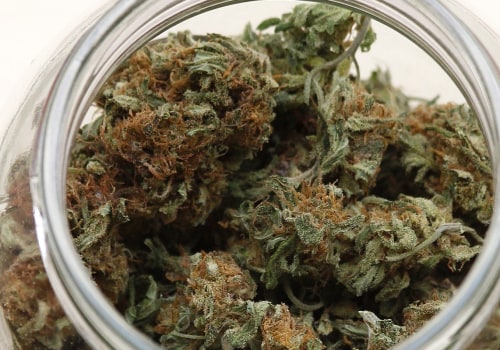When it comes to treating back pain, cannabis can be a powerful ally. Different marijuana varieties contain compounds that may help relieve pain, nausea, and other symptoms. The two main components of cannabis that are most studied for pain relief are cannabidiol (CBD) and tetrahydrocannabinol (THC).THC is similar to the cannabinoid chemicals found naturally in the body. When people ingest or inhale THC, it stimulates the brain's cannabinoid receptors.
CBD does not cause a high, but it does interact with pain receptors in the brain to produce analgesic and anti-inflammatory effects. Recent studies have looked into the effects of cannabis on chronic pain. Some studies used parts of the cannabis plant, while others used the entire plant. Using parts of the plant (such as CBD oil) helps to study the specific actions of that ingredient, but when the whole plant is used, what is called the entourage effect occurs, in which the parts work together to have more effect. Strains high in THC seem to work better for relieving pain, while CBD works better for relieving inflammation. However, intense THC causes more psychoactive effects.
CBD is another type of cannabis-based oil that is increasingly popular among people with chronic pain. Both CBD and THC work with receptors that release neurotransmitters in the brain. They can affect things like pain, mood, sleep, and memory. CBD is emerging as a promising pharmaceutical agent for treating pain, inflammation, seizures and anxiety without the psychoactive effects of THC. Our understanding of the role of CBD in treating pain continues to evolve, and evidence from animal studies has demonstrated that CBD exerts its analgesic effects through its various interactions and the modulation of the endocannabinoid, inflammatory and nociceptive systems (pain detection). The endocannabinoid system consists of cannabinoid receptors that interact with our own natural cannabinoids. This system is involved in the regulation of many body functions, such as metabolism and appetite, mood and anxiety, and the perception of pain.
Cannabinoids and their derivatives can be used as an alternative or adjuvant for chronic pain in older people, especially when standard analgesic modalities alone have failed. Given the current challenges of treating chronic pain, together with the consequences of the opioid epidemic, pain management professionals and their patients are seeking effective and safe alternatives to opioids for pain relief. People with arthritis and other chronic musculoskeletal pain are increasingly turning to cannabis products to alleviate different symptoms, such as pain, fatigue, insomnia and anxiety. The researchers found that participants preferred indica strains for pain control, sedation and sleep, while they opted for sativa strains to improve energy and mood. However, more research is still needed in the area of cannabis use for chronic pain, especially on the use of different strains, doses and methods of administration. Until there is high-quality scientific evidence in humans, it is difficult to make a recommendation for the regular use of CBD in the treatment of chronic pain. And in states where CBD is legal, laws may vary as to the amount of THC allowed in CBD products to be legally sold.




